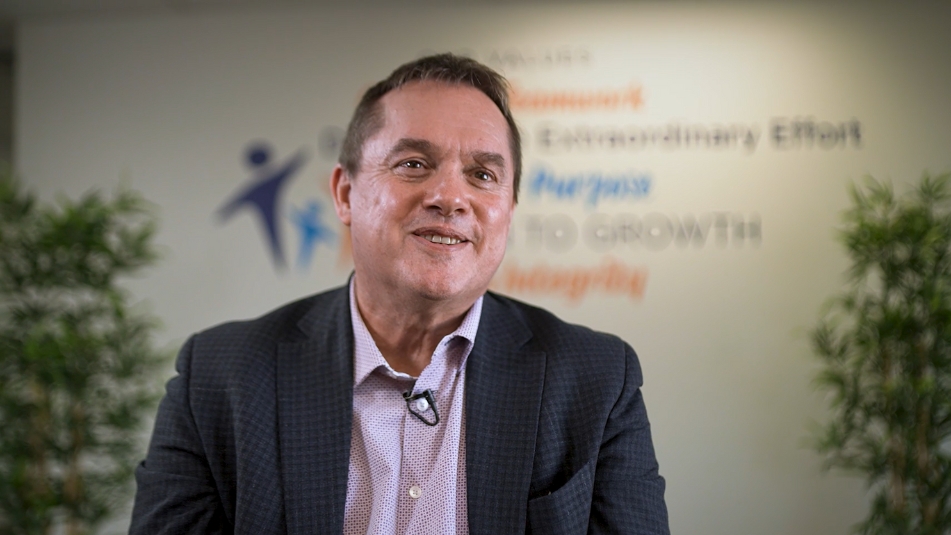City of Sandy Springs Update - A Conversation with Mayor Rusty Paul
In early August, the Council for Quality Growth met at the recently opened Sandy Spring City Hall for a presentation by the Mayor of Sandy Springs, Rusty Paul. He provided an overview of the new complex, which includes city offices, conference rooms, two theatres, catering services, an underground garage with over 300 parking spaces, and an outdoor performing area surrounded by fountains and green space. Mayor Paul indicated that the project was funded with $229 million in public funds, along with $80 million of private financing. The City of Sandy Springs had been saving for the project for years, with only $150 million of the project was funded with debt.
Since Eva Galambos’ days as Mayor, there was recognition that the city had nowhere to come together as a community. Polling of the citizens prior to inception of the development indicated that 65 percent of the citizens were in favor of the public project and most wanted access to the arts closer to home, rather than driving to downtown Atlanta. The strong demand in season ticket sales for the first season of the City Springs Theatre Company https://www.cityspringstheatre.com substantiate this fact, with over 4,000 season ticket holders, versus the predicted 500.
But with progress and economic development comes traffic and the region is finally getting serious about transportation. Mayor Paul ran for re-election to be part of the solution, although he acknowledges that he is not a transportation expert. Per Mayor Paul, it is no longer going to be feasible to have one person per car and mass transit must be part of the solution.
Mayor Paul pointed out that since the 1940s, the only two roads built in North Fulton are GA 400 and I-285. All the rest of the traffic is carried on older roads that are expensive and hard to retrofit. While the city has continued to grow over the last 30 years, there has been little investment in transportation.
Anyone familiar with Sandy Springs knows that the East Cobb commute on Johnson Ferry to the Perimeter is a bottleneck, as well as Roswell Road to I-285. So, the City will use TSPLOTS funding to make some intersection improvements. However, alternative methods for transit will also be pursued, such as trails for walking, biking, roller blading, etc. Mayor Paul indicated that it is his vision to have a “wisdom” trail for walking, like one he experienced in San Diego, with quotes of philosophers along the way. There is also an awareness that technology will be disruptive to transportation in the future, although no one knows quite how, at the moment. So, any improvements undertaken by the City of Sandy Springs will be made with an eye towards adaptivity, as new transportation alternatives are introduced.
Transportation is crucial for long term success of Sandy Springs to continue to attract major companies. In fact, Sandy Springs already has the largest concentration of Fortune 500 companies on a per capita basis in the nation. While most are familiar with the relocation of State Farm and Mercedes, even the back-office operation of the NYSE is housed in Sandy Springs. Most of the headquarters companies are leasing space and Mayor Paul stated that if the transportation problems are not solved, these companies may relocate in the future.
Mayor Paul went on to say that Sandy Spring has made a deal with citizens to protect single family homes. But the north end of city is open for business, with the focus being the region north of North Springs High School, from Dalrymple Road to the Chattahoochee River. There are currently acres of Class B and Class C apartments that need to be revitalized. The city has commissioned a study that will be delivered in early 2019 and will provide ideas for improvement of this area. The focus will be on retail development, because it is the “proverbial canary in the coal mine”, per Mayor Paul. But, of course, retail is dependent on “feet on the street”, so housing must be refreshed to support the effort. While Amazon is booming, there are certain retail service businesses and restaurants that are not conducive to on-line shopping and these are the types of businesses that Sandy Springs hopes to attract.
Another area of concern expressed by Mayor Paul is housing for working class families. It is a current reality that police, firemen, teachers and public servants in Sandy Springs commute for hours to work, due to the unaffordability of housing in the area. He is a strong proponent of owning a home, but with the affluence of the area and land now over $2 million an acre, it is difficult to provide housing for the working middle class.
It was evident from the conversation with Mayor Paul that Sandy Springs is on the move, with new developments planned on the north end of the city, transportation and intersection improvements underway, along with pursuit of affordable housing for the working middle class. If the impressive new City Hall is any indication of what Sandy Springs can do, be on the lookout for even more changes over the next few years in this vibrant area of Metro Atlanta.


